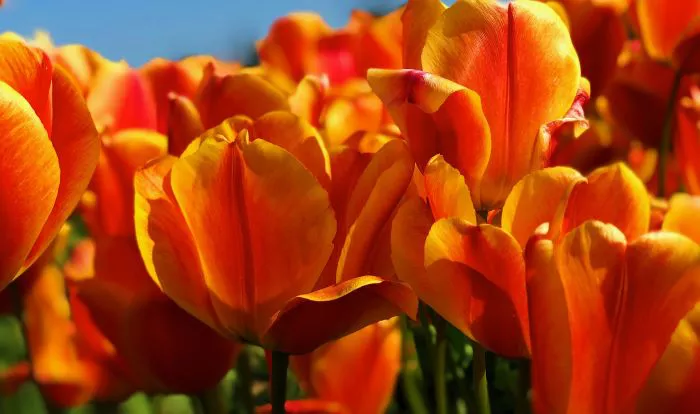Butterflies are among the most beautiful and captivating insects in our gardens. Their vibrant colors and graceful flight patterns bring life to any outdoor space. To attract butterflies, it is essential to understand what draws them to flowers. This article explores the various factors that attract butterflies, including flower characteristics, environmental conditions, and the importance of habitat.
The Role of Color
Color plays a significant role in attracting butterflies to flowers. Butterflies are particularly attracted to bright colors, such as red, orange, yellow, and purple. These colors stand out against the green foliage and signal to butterflies that nectar is available.
Different butterfly species may have preferences for specific colors. For example, many species are drawn to yellow and purple flowers. Gardeners can enhance their butterfly gardens by planting a variety of colorful flowers to appeal to different butterflies.
Flower Shape and Structure
The shape and structure of flowers also influence butterfly attraction. Butterflies have long proboscises that they use to sip nectar from flowers. Flowers with tubular shapes or shallow, open structures are particularly appealing because they allow easy access to nectar.
Flat-topped flowers, such as milkweed and asters, provide a landing platform for butterflies. These flowers not only offer easy access to nectar but also allow butterflies to rest while feeding. It is beneficial to include a mix of flower shapes in a butterfly garden to accommodate various butterfly species.
Nectar Availability
Nectar is the primary food source for adult butterflies. Flowers that produce abundant, high-quality nectar are more likely to attract these insects. The sugar concentration in nectar can vary among flower species, and butterflies tend to prefer flowers with higher sugar content.
In addition to nectar, some butterflies also feed on pollen. Flowers that provide both nectar and pollen can attract a wider range of butterfly species. Planting a diverse array of flowering plants that bloom at different times throughout the growing season ensures a continuous supply of nectar for butterflies.
Scent and Fragrance
The scent of flowers can significantly influence butterfly attraction. Many butterflies are attracted to sweet fragrances, which signal the presence of nectar. Flowers that emit strong scents, especially during the day, are more likely to attract butterflies.
Some species of butterflies are also attracted to specific scents. For example, certain flowers may attract specific species of butterflies based on their olfactory preferences. Gardeners can enhance their butterfly gardens by incorporating fragrant flowers to draw these insects in.
Environmental Conditions
The environment plays a crucial role in attracting butterflies to flowers. Butterflies are ectothermic, meaning they rely on external heat sources to regulate their body temperature. They often seek sunny spots to warm themselves, making sunny gardens more attractive.
Additionally, butterflies prefer areas with shelter from wind and rain. Planting flowers in clusters can provide protection and create microhabitats that are more inviting for butterflies. Including native plants in the garden can also help create a suitable environment, as these plants are adapted to local conditions and provide resources for local butterfly populations.
Host Plants for Caterpillars
While adult butterflies are attracted to flowers for nectar, it is essential to consider the needs of their larvae, or caterpillars. Many butterflies have specific host plants where they lay their eggs. These plants provide food for the caterpillars once they hatch.
By planting host plants alongside nectar-producing flowers, gardeners can create a more inviting environment for butterflies. For example, milkweed is a critical host plant for monarch butterflies. Including a variety of host plants in the garden can support the entire life cycle of butterflies and encourage them to return year after year.
Seasonal Considerations
The time of year also affects butterfly attraction to flowers. Butterflies are most active during warm months when flowers are in bloom. Early spring and late summer are particularly important times for butterfly activity.
To attract butterflies throughout the growing season, gardeners should plan for continuous blooms. Planting a mix of early, mid, and late-season flowering plants ensures that butterflies have access to nectar at different times. This strategy not only attracts butterflies but also supports other pollinators and beneficial insects.
Creating a Butterfly-Friendly Garden
To create a butterfly-friendly garden, consider the following tips:
Choose Native Plants: Native plants are adapted to local conditions and are more likely to attract local butterfly species. They also provide essential resources for caterpillars.
Plant in Clusters: Grouping flowers in clusters makes them more visible and accessible to butterflies. This arrangement allows butterflies to feed more efficiently.
Provide Water Sources: Butterflies need water for hydration. Adding shallow dishes with water or creating damp areas in the garden can provide essential hydration.
Avoid Pesticides: Pesticides can harm butterflies and other beneficial insects. Opt for organic gardening practices to create a safe environment for butterflies.
Create Shelter: Incorporate shrubs, grasses, and other plants to provide shelter from wind and rain. This can create a more inviting habitat for butterflies.
Conclusion
Attracting butterflies to flowers involves understanding their preferences and needs. Bright colors, flower shape, nectar availability, scent, and environmental conditions all play a role in drawing these beautiful insects. By creating a diverse and hospitable garden environment, gardeners can support butterflies throughout their life cycles.
Incorporating a variety of nectar-producing flowers and host plants, while ensuring suitable conditions, will encourage butterflies to visit and thrive in your garden. With a little planning and care, you can create a vibrant butterfly-friendly space that enhances the beauty of your outdoor environment.


